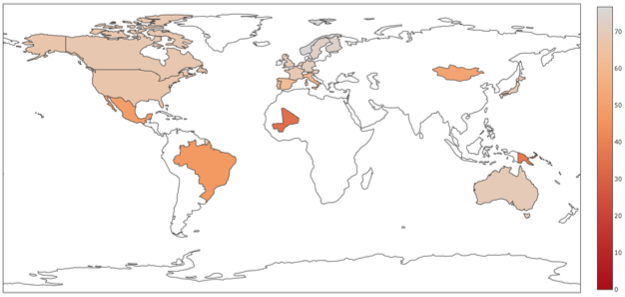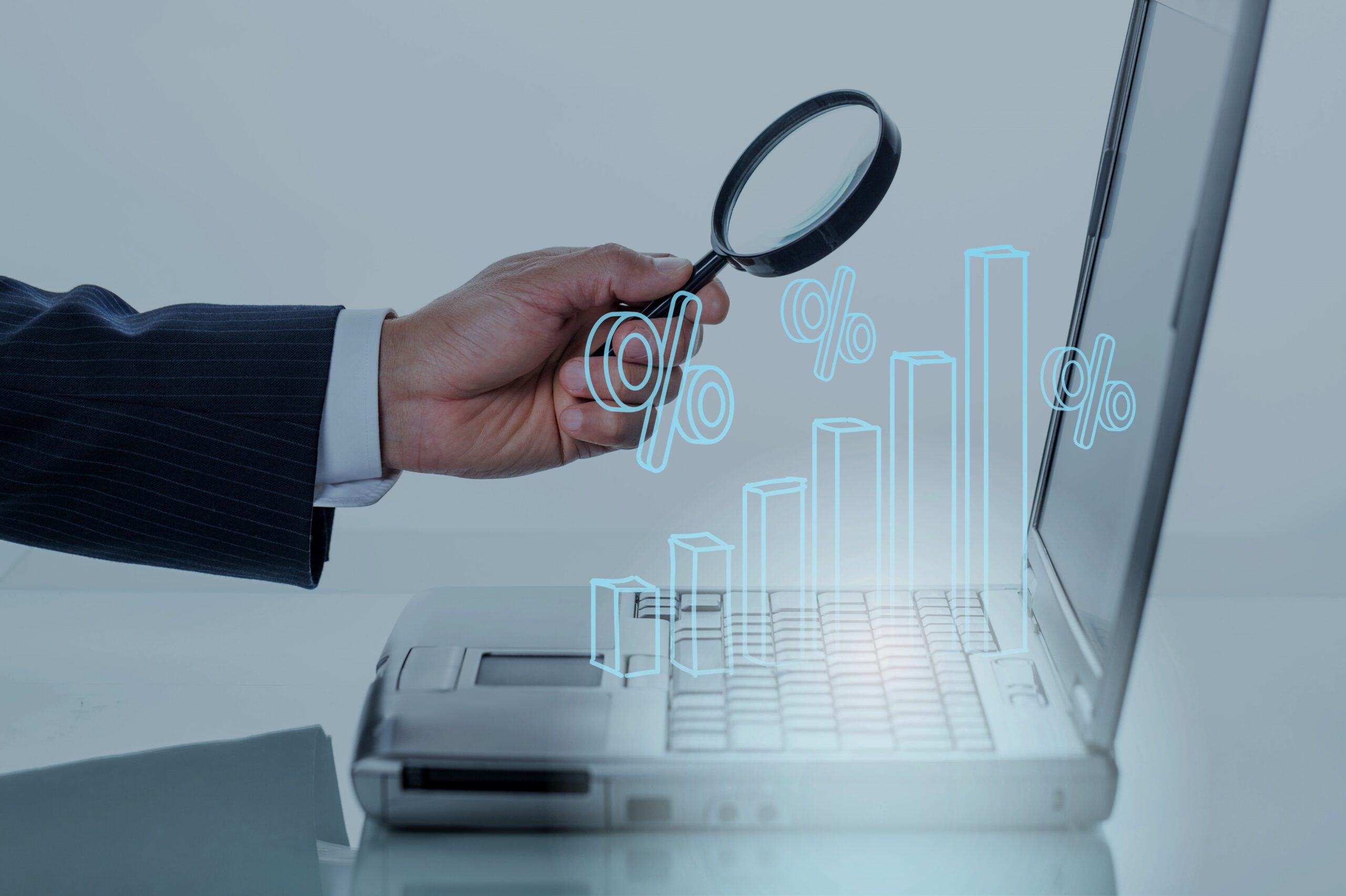Based on her expertise in financial risks and her commitment to climate action, Anne demonstrates how to include climate risk in financial models and how rerouting flows towards the funding of emerging technologies can make a difference.
I had the pleasure of speaking with Anne Gruz, founder of Iggaak on her experience starting a new firm during COVID-19, of the types of risks climate change and the necessary energy transition introduce in financial models, and finally of using Atoti to implement a financial risk model that includes climate risk. Clear in her willingness to act, she is applying her extensive knowledge in financial risk models to help financial firms understand and navigate how to incorporate climate risk into their workflow.
Once you analyze the impacts of climate change, it’s a new start. Now I understand that time is running out, and that I want to do my best addressing the changes we have to face, taking maximum actions now. One of the first things I can do as an engineer is research and development in my field of expertise.
Hetal: What is the story behind the name “Iggaak”?
Anne: Iggaak are sustainable snow goggles traditionally crafted and used by the Inuit people of the Arctic to prevent light reflection and snow blindness.
Hetal: Why “Iggaak”? Do you have a pair of Iggaak snow goggles?
Anne: Climate finance is critical to addressing climate change because large-scale investments are required to significantly reduce emissions, notably in sectors that emit large quantities of greenhouse gasses or are very exposed. My company’s mission is to provide goggles to better assess risks in such a context. It also means doing things smart, in a simple and sustainable way. On a personal level, it is a reference to my childhood in Canada. Snow is my element. While I don’t have Inuit snow goggles, I have a small collection of objects and paintings, mostly figures of animals and hunters from natural materials.
Hetal: Iggaak is a young firm – how has it been received thus far?
Anne: The expertise is now well recognized. Since I decided to contribute, it’s been very intense! It is an extremely active and rapidly evolving area with disruptive impacts to economic agents in key dimensions: governance, strategy, risk management, metrics, targets, limits, scenario analysis and disclosures.
The science of climate change is now well established thanks to the tremendous work done by the Intergovernmental Panel on Climate Change (IPCC). I invite you to spend the necessary time to read the 40 pages Summary for Policymakers. I’ve met many people from various financial and corporate actors with a strong fighting spirit and willing to combat climate change and its consequences.
To further illustrate my point, In order to align with a Paris compliant pathway and bring emissions to net zero by 2050, there are different implications for the Sell Side, for the Buy Side and for corporate entities. This is very clear when you look at the EU taxonomy regulation from these three different angles. I’m working with a network of partners and via open collaborations to follow the pace of changes and to increase impact. I get the support of technology companies as well to deliver properly formatted insights to business users.
From a technical perspective, Iggaak started with the co-development of the CERM model. It helped to build a specialized climate finance quantitative expertise on top of the initial value proposition, which was to provide capital markets pricing and risk services. To make the use case more concrete I’ve implemented the model in python. To further engage with researchers and financial institutions, I then decided to integrate illustrative data sets and the calculation engine with a proven and scalable analytics platform, Atoti/atoti+. Atoti is a free Python BI analytics platform. Atoti+ is the production version used by banks for mission-critical applications such as XVA, FRTB, IFRS9.
Hetal: What is CERM, or climate extended risk model?
Anne: Iggaak’s risk engine, based on the CERM model I’ve developed with Josselin Garnier and Green RWA, generates the extra cost of risk resulting from climate change on loans and bond books. We adopt a Gaussian Copula model combining 3 types of data:
- credit data used in banks’ credit models,
- data measuring the carbon impact of borrowing companies (positive or negative),
- data reflecting physical exposure to climate change impacts.
The engine produces measures such as projected default probabilities and ratings, impairments and risk return metrics. The measures can be used to understand the effective risk going forward and to steer the portfolio quality. It allows us users to start integrating climate risk in the investment and lending decision processes with model based metrics.
Hetal: What were some of the challenges you faced while starting Iggaak?
Anne: Going live with growing my own company at the very first days of the COVID-19 pandemic has been a challenging experience. On the other hand, it gave me the opportunity to explore new areas with my peers from the Association Green RWA and from Lusenn. I spent most of the lockdowns working on climate risk, reading. It’s been plenty of interviews, lots of virtual working sessions, model specifications, coding… and very few days off. In the end, it’s a life-changing experience. After understanding how climate change will have major consequences on our economy and society, and how I can act, I decided to reorient part of the activity towards climate financial analytics.
Hetal: Who are Lusenn and Green RWA?
Anne: Green RWA is a non-profit association. It believes that climate transition will require large-scale investments and that the financial community needs to work in conjunction. It leads a network of financial actors towards this goal. This is where it all started for me! Olivier Vinciguerra and Jean-Baptiste Gaudemet offered to review their first white paper. That was a very formative experience.
Josselin Garnier is professor at the French Ecole Polytechnique. He is also the head of Research of Lusenn, a company of mathematicians promoting the formulation and the use of probabilities. They develop original models for finance. When I engaged with Green RWA I was working with Lusenn on algorithmic trading. I proposed to Josselin to look into climate finance as well. We formed a working group with Green RWA to redevelop and to better formalize the initial model from a mathematical perspective.
Hetal: Banks and regulatory authorities are implementing updated guidance around disclosing climate or environmental risk. What is Iggaak’s role in this changing landscape?
Anne: Iggaak is a small consultancy providing specialized expertise in financial risk including climate risks. We apply an agile model to deliver what our clients need without the frustrations that may come with large consulting firms. I act as a catalyst in addition to local teams or partner teams. Given the size of climate change-related challenges and new regulatory frameworks, all companies should be active in the fight against climate change, and all initiatives are welcome. And we need to go very fast! That’s why the model I’ve chosen is collaborative innovation, working within a network of established partners.
For many years I didn’t realize what was at stake. Once you start looking closely at climate change, it’s a new start. Now I understand that time is running out, and that I want to do my best addressing the changes we’ll have to face in the next decades, taking maximum actions now. One of the first things I can do as an engineer is research and development.
Hetal: How does CERM compare to existing risk models?
Anne: Some models provide portfolio alignment metrics, but do not compute the dollar impact. Some other models focus either on transition or on physical risks. The originality of our approach is that it combines economic, transition and physical risks. Furthermore, by generating full losses distribution, it captures tail risk. Finally, it embeds an original calibration method regarding the split between systematic and idiosyncratic risks in the gaussian copula model.
Hetal: How are climate risk mitigation measures factored into the risk model?
Anne: Mitigation refers to investments in decarbonation projects. Mitigation plans impact the sensitivity to transition risk. This is captured via time-varying profiles of micro-correlations.
Hetal: Do certain actions required to mitigate climate change introduce greater risk/uncertainty than others?
Anne: Assessing the quality of mitigation projects requires a specialized climate analyst’s expertise. Rating agencies now have the capability to analyze and to challenge plans. Tier 1 and Tier 2 banks develop this expertise in-house. They are able to discuss transition plans with the borrowers. They provide services specifically around transition funding, via green bonds or sustainability-linked products. Asset managers’ platforms provide off the shelf connectors to specialized data and distribute ESG funds.
In Europe more specifically, the EU taxonomy defines what should be funded in the context of the energy transition and of adaptation to climate change. Of course, the bigger risk is from inaction, from the lack of mitigation and adaptation plans.
Given the size of climate change-related challenges and new regulatory frameworks, we believe all companies should be active in the fight against climate change.
Hetal: How does the model take into account the shifting risk over time?
Anne: The time step is one year, but we use projections on mid-term and long-term horizons. We look typically until 2030, 2050, or even 2100 which is the horizon of IPCC’s scenarios. Transition risk indeed stems from the risk of policy and regulatory changes and diminishes across time if the transition is effectively engaged and if we shift smoothly to a low carbon economy. This is an orderly scenario. Under so-called disorderly scenarios, if the transition occurs late and in panic, the impact is a brutal cut of all carbon dependent activities after decades of business as usual. The profile of transition risk intensity is very different between the two cases. The International Energy Agency (IEA), the (International Renewable Energy Agency (IRENA) and the Network for Greening the Financial System (NGFS) produce interesting scenarios for finance.
Hetal: What are some of the mathematical models or techniques involved in a credit risk model?
Anne: The model is a Merton-type model. It allows efficient Monte-Carlo estimations of the expected and unexpected losses. It extends the ASRF model, central in the Basel regulatory capital framework. It relies on the same assumptions: an infinitely granular portfolio and a dependence structure described by the Gaussian copula. The single risk factor is replaced by 3+ risk factors. Migration matrices evolve in time due to the non-stationarity of the physical and transition risks, whereas specific risks and economic risk are stationary.
Hetal: How does transition risk shift?
Anne: Transition risk is a short term impact compared to physical risk. It is decreasing for companies adjusting toward a lower carbon economy or enabling the shift to sustainable energy. Some other companies might very well get whipped out, falling into the ‘stranded assets’ category. The impact is conditional on the transition scenario we are considering (e.g., orderly, disorderly, hot house world). This has a bigger impact for banks in the short term compared to physical risk.
Hetal: As part of the CERM implementation, Atoti’s what-if capabilities were used to explore and compare impacts. What scenarios were included?
Anne: I use scenarios from the NGFS. Climate finance is full of uncertainties. To reduce the impact of uncertainties when exploring risks, I always analyze metrics compared to a baseline: changing climate scenarios, removing the climate risk drivers from calculations, changing the sensitivities to the risk drivers to simulate mitigation/adaptation plans, changing the quality of the collateral… Doing so, the ability of Atoti to override data sets and to recompute measures on the fly is a great asset.
I could run the project from my standard laptop without ever encountering memory issues [using Atoti].
Hetal: How did you discover Atoti?
Anne: There are many tools out there to help quants and data scientists to build applications. I wanted a proven tool used at scale within banks’ mission critical activities so that I can focus on climate and risk analytics. I knew ActiveViam’s tools from my previous life as a capital markets front-office and risk expert. I was very keen to leverage the proven capabilities for market risk VaR, as well as the latest R&D. At that point in time I got in touch with ActiveViam executive management. They were very supportive of the initiative and keen to invest bandwidth to support me.
Hetal: What made you decide to use Atoti for your work?
Anne: Atoti is available with a free license distribution. It allows me to provide an open source version on GitHub. I started straight away with the integration. It turned out to be easy and flexible. I could do a lot quickly, with a few lines of core directly from JupyterLab. The first integration was done within 2 weeks. After this step, I got help from ActiveViam experts to further optimize the data model, to package and componentize the code so that the solution is ready to support the pilot program.
Hetal: Which feature do you find most useful to your work?
Anne: I loved the python API and the ability to perform non-linear quantiles on the fly. I can build dashboards with efficient filters in a few drag and drops. I also like the ready to use handy data slicing and dicing widgets, allowing access to either the most granular level of information or aggregated values at higher levels. The solution is also flexible, allowing me to add new widgets, such as maps from plotly.
Finally, the performance is great. I could run the project from a standard laptop without encountering cpu or memory issues.
Hetal: Do you find the visualizations shape how people consume the risk model?
Anne: Of course! Data visualization is an art. When used efficiently it provides insight and reveals trends that are otherwise difficult to see. In the field of climate finance some graphs give a powerful perspective on the tradeoff between physical risk and transition risk. For other analysis it allows comparison versus a baseline side by side, reducing the impact of huge uncertainties. Finally in the context of pilot programs, I can present the solution to end users with business oriented and actionable analytics. This requires powerful tools to manage data sets, to implement storytelling workflows and to play with what-if scenarios before results reach the visualization layer.
Thank you, Anne, for taking the time to explain this incredible work! If you’d like more information on climate risk models discussed in this article, check out Iggaak’s website and Anne’s article describing the CERM example she implemented. For more articles from the Atoti community on this and other topics, visit us on the web at Atoti.io.



